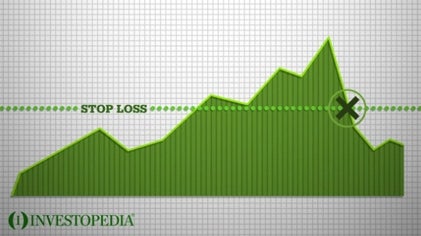A stop loss order is an order placed with a broker to sell or buy a stock if it drops to a certain price level. Brokers will place them at no cost to you, they help minimize the emotion of cutting your losses and they are great tools for risk-management when you don't have the time or ability to keep constant track of stock prices.Stop-loss orders are widely used by investors and sophisticated traders in order to limit potential losses of a security, if the price moves against their intended strategy. Average investors looking for the price of a stock to increase, known as a long strategy, would set a sell-stop order; while a trader looking for the price of the stock to decrease, known as a short strategy, would set a buy-stop order. Some investors set stop-loss orders at a predetermined percentage, such as 5% or 10% below the current price. This lets them feel safer about steep drops or spikes in the price of their holdings, knowing they actually got out before the loss could be more severe. Investors and traders should keep in mind that the stop price could be activated by short-term fluctuations in a stock's price. A recommendation for placing an optimal stop-loss order is to determine a percentage that allows a stock to fluctuate day to day, while preventing as much risk as possible. Setting a 2% stop loss on a stock that has a history of fluctuating 5% or more in a week is not the best strategy. Consider the following example: An investor with a long strategy on a stock that costs $50, and that usually trades within a range of $46 to $54, might consider asking her broker to set a stop loss at $44. This way, the stop loss does not trigger a sale from a common price swing of 8%, but would kick in for a riskier drop of 12%. Investors should also keep in mind that a stop loss order does not guarantee that the stock will be sold exactly at the stop loss price. It promises to sell the stock at the next available price, after hitting the designated stop loss amount. If a stock is falling fast, the next available price may be below the trader's stop loss point; however, this might still save the investor from a much larger loss.





